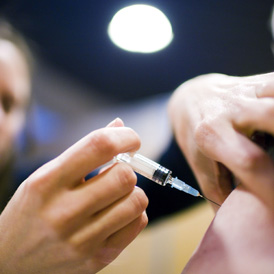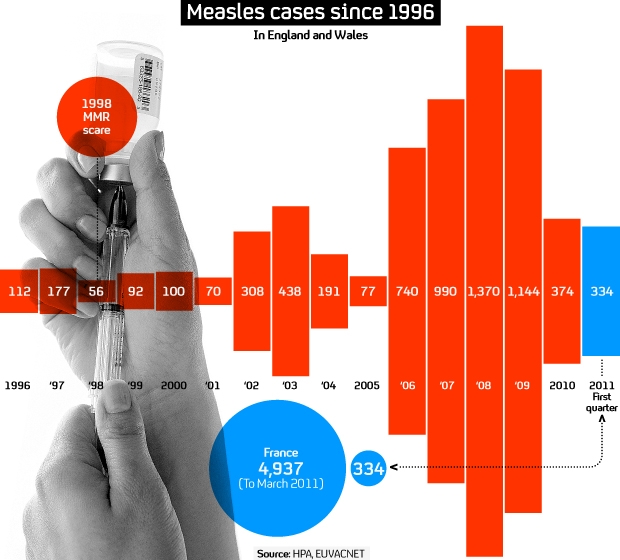Measles cases soar in 2011
The Health Protection Agency says the number of confirmed cases of measles in England and Wales has almost matched that for the whole of last year with 334 confirmed cases.

Data from the Health Protection Agency (HPA) reveals that the number of confirmed cases of measles to the end of April in England and Wales has almost matched the 374 case total for the whole of 2010.
There have been small outbreaks in universities, schools and within individual families, while some people caught the disease abroad as Europe faced a surge in measles cases.
In mid-April, the World Health Organisation (WHO) warned of more than 6,500 cases of measles in 33 countries, with France being worst hit with almost 5,000 cases.
In England and Wales, the under-25s were most affected in the first three months of the year. The vast majority had not had the vaccine against the disease. Most cases occurred in London and the south east, followed by Yorkshire and the Humber.
An HPA spokeswoman told Channel 4 News: “This is the time of year when many children are travelling on school trips and family holidays, so the Health Protection Agency is urging parents to protect their children against measles by ensuring they have been immunised with two doses of MMR.
“This is particularly important given the increase in cases in children and young adults over the last few months here and abroad.
“Measles is a highly infectious and potentially dangerous illness which spreads very easily but it’s particularly dangerous in very young children and young adults. Whether you stay here in the UK or travel abroad it is crucial that individuals who may be at risk are fully immunised.
Our advice is it’s never too late to get vaccinated with both doses of MMR for optimum protection and it protects against 3 diseases – measles mumps and rubella.”

Measles: what to look for
Approximately 10 days after infection, the following symptoms begin to appear
- runny nose, watery eyes, swollen eyelids and sneezing
- red eyes and sensitivity to light
- a mild to severe temperature, which may peak at over 40.6C (105F)
- temperature may then fall but rise again when rash appears
- tiny greyish-white spots in the mouth and throat
- tiredness, irritability and general lack of energy
- aches and pains
- poor appetite
- dry cough
- red-brown spotty rash
The above symptoms generally last for up to 14 days. See a doctor without delay if you suspect any rash is measles.(Source: NHS Direct)
MMR
The most recent UK figures for uptake of the measles, mumps and rubella (MMR) jab, covering September to December 2010, showed 89.4 per cent of children had received their first dose by the age of two.
By age five, 84.8 per cent of children had received their second dose and both of these figures are slightly up.
Rest of Europe
The HPA says there has been a much smaller increase in confirmed cases of measles in April in the UK. The vast majority of cases have been in unimmunised children of secondary school age and many of these have links to cases in France.
Around Europe, Belgium has reported 100 cases to date, compared to 40 cases in all of 2010. Bulgaria has reported 131 cases this year, compared to 24,000 cases in 2009-10. France reported 4,937 cases from January to March 2011, compared to 5,090 cases reported in all of 2010.
In Serbia, nearly 300 cases have been reported from Leskovac, in the south east of the country.
-
Latest news
-
Windrush scandal: returning to the UK after a forty year wait6m

-
Netanyahu ‘survival’ depends on ‘expanding war’ says head of Palestinian National Initiative5m

-
Proposed law change could strip parental rights from paedophiles5m

-
Hugh Grant settles privacy lawsuit against The Sun newspaper publisher2m

-
Post Office Scandal: what did top executive know?6m

-





